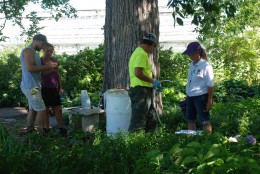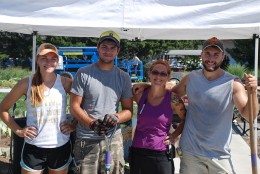 Late September through October is an excellent time to plant spring-flowering bulbs such as crocus, tulips, and daffodils. These plants need to develop roots in the fall and must meet a chilling requirement over the winter in order to bloom in the spring.
Late September through October is an excellent time to plant spring-flowering bulbs such as crocus, tulips, and daffodils. These plants need to develop roots in the fall and must meet a chilling requirement over the winter in order to bloom in the spring.
Choose a planting site that has full sun to partial shade. The ideal soil would be a sandy loam, but even poor soils can be used if organic material such as peat moss, compost, or aged bark is mixed in. For example, a heavy clay can be amended by mixing in one-third to one-half organic material. Soil pH should be between 6.0 and 7.0.
Bulbs need good aeration as well as good drainage for proper development. It is best if the bulbs are given 12 inches of prepared soil. If one-third organic material were added, this would require mixing 4 inches of organic material with 8 inches of soil. Incorporate about 3 pounds of a complete fertilizer such as a 5-10-5 per 100 square feet during preparation or fertilize according to soil test.
Planting depths vary depending on the size of the bulbs. For example, tulips and hyacinths are set about 6 inches deep, and daffodils are put 6 to 8 inches deep. Smaller bulbs are planted shallower. As a rule of thumb, bulbs are planted two to three times as deep as their width. Planting depth is the distance from the bottom of the bulb to the top of the soil. Large bulbs are normally spaced 4 to 6 inches apart, and small bulbs about 1 to 2 inches. Planting in clumps or irregular masses produces a better display than planting singly.
After placing the bulbs at the proper depth, replace half the soil and add water. This will settle the soil around the bulbs and provide good bulb/soil contact. Add the remaining soil and water again. Although there will be no top growth in the fall, the roots are developing, so soil needs to be kept moist but not wet. Mulch can be added after the soil has frozen to prevent small bulbs from being heaved out of the soil by alternate freezing and thawing.
-Ward Upham, Extension Associate, Horticulture and Natural Resources
 The Friends of the Gardens host a garden party each year to raise funds for student internships. The 11th annual garden party, themed “Songs in the Garden,” was held Friday, June 10 and raised approximately $20,000.
The Friends of the Gardens host a garden party each year to raise funds for student internships. The 11th annual garden party, themed “Songs in the Garden,” was held Friday, June 10 and raised approximately $20,000.



